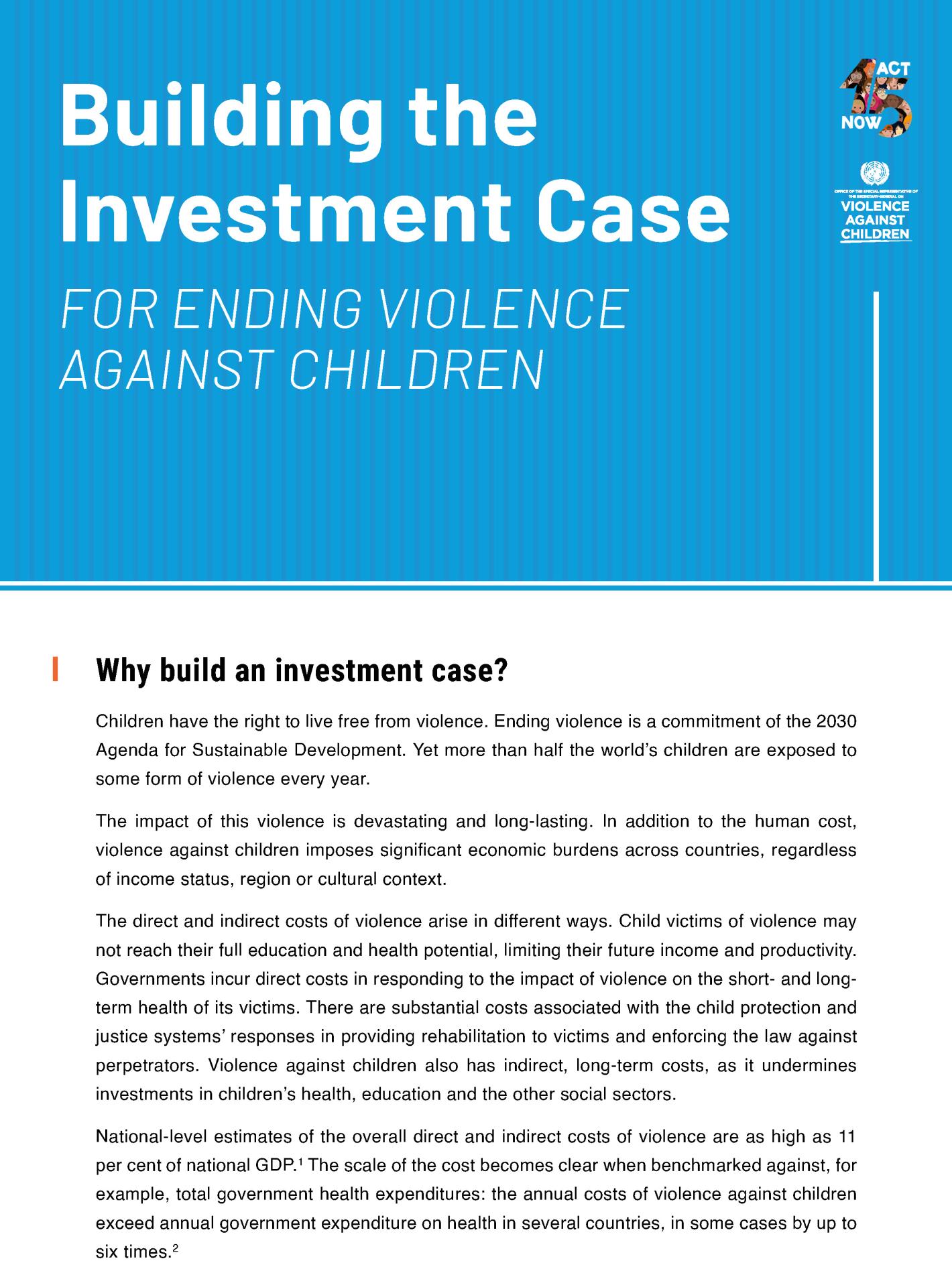
جدوى العائد على الاستثمار في إنهاء العنف ضد الأطفال
- 27 January 2025
- United Nations Special Representative of the Secretary-General on Violence Against Children
Children have the right to live free from violence. Ending violence is a commitment of the 2030 Agenda for Sustainable Development. Yet more than half the world’s children are exposed to some form of violence every year.
The impact of this violence is devastating and long-lasting. In addition to the human cost, violence against children imposes significant economic burdens across countries, regardless of income status, region or cultural context.
The direct and indirect costs of violence arise in different ways. Child victims of violence may not reach their full education and health potential, limiting their future income and productivity. Governments incur direct costs in responding to the impact of violence on the short- and longterm health of its victims. There are substantial costs associated with the child protection and justice systems’ responses in providing rehabilitation to victims and enforcing the law against perpetrators. Violence against children also has indirect, long-term costs, as it undermines investments in children’s health, education and the other social sectors.
National-level estimates of the overall direct and indirect costs of violence are as high as 11 per cent of national GDP. The scale of the cost becomes clear when benchmarked against, for example, total government health expenditures: the annual costs of violence against children exceed annual government expenditure on health in several countries, in some cases by up to six times.
